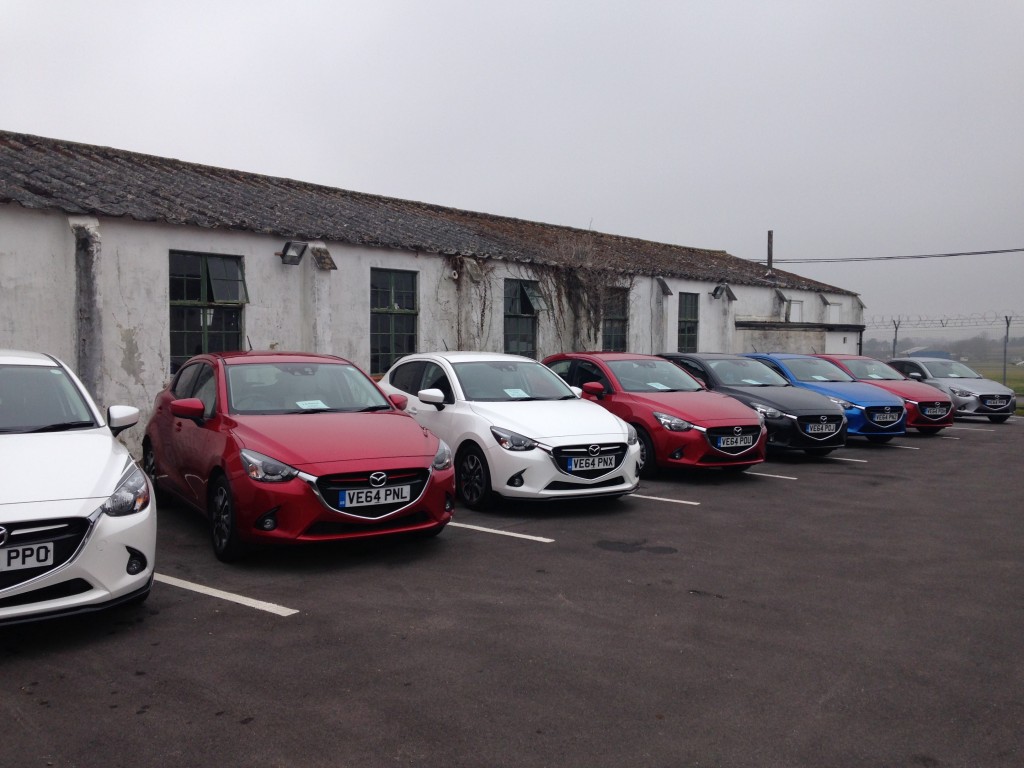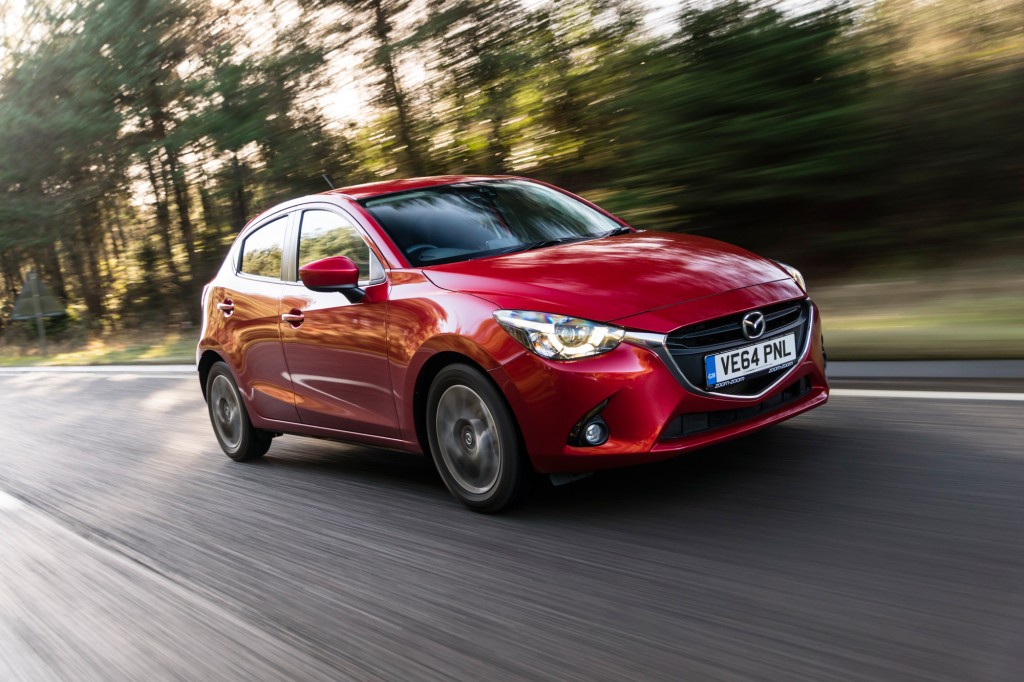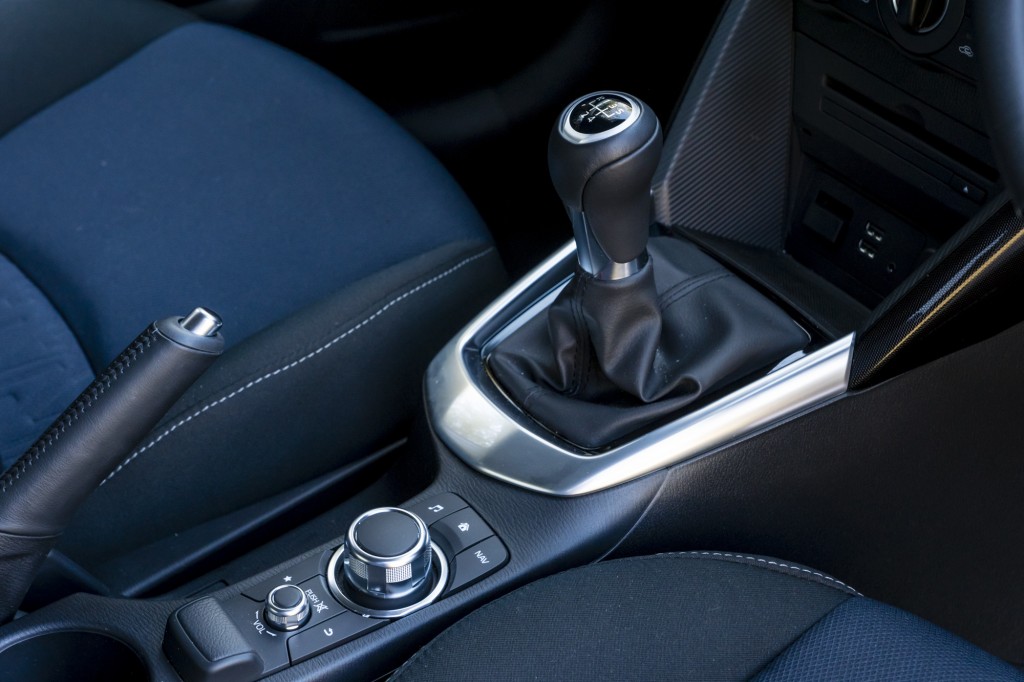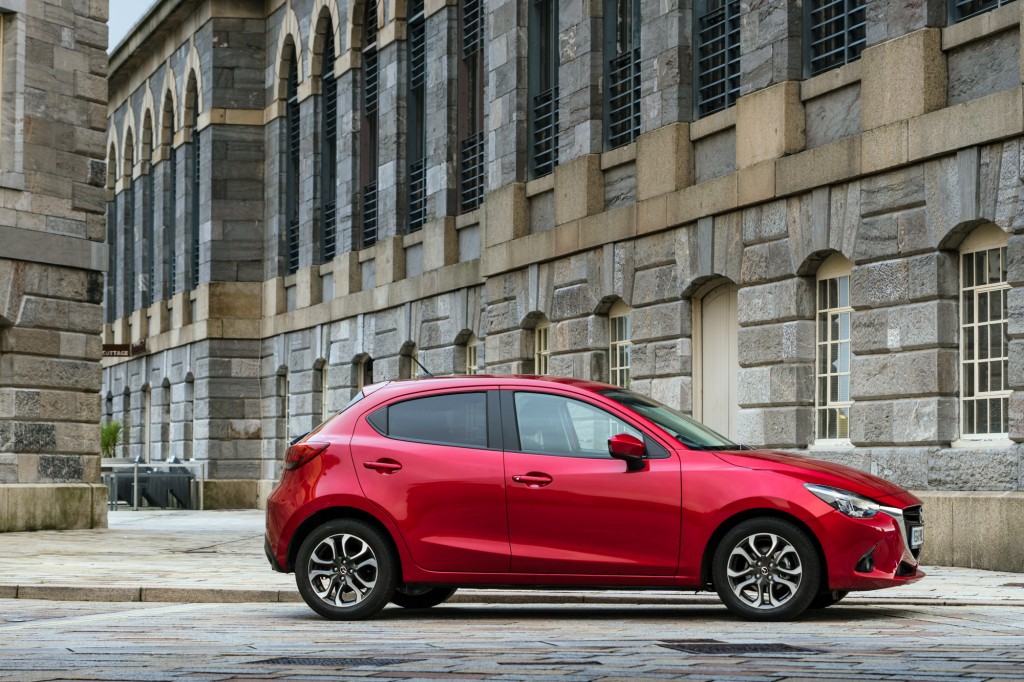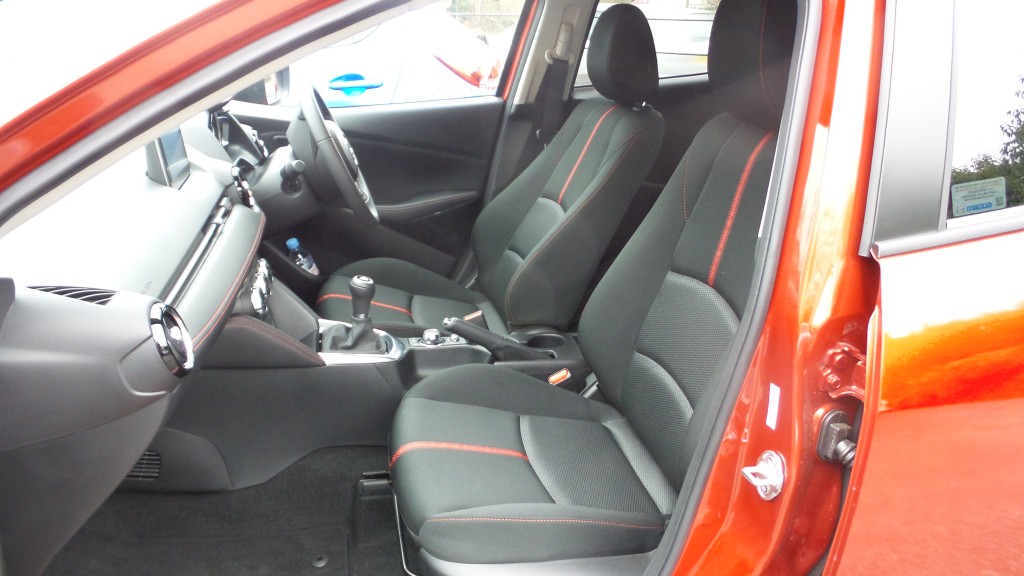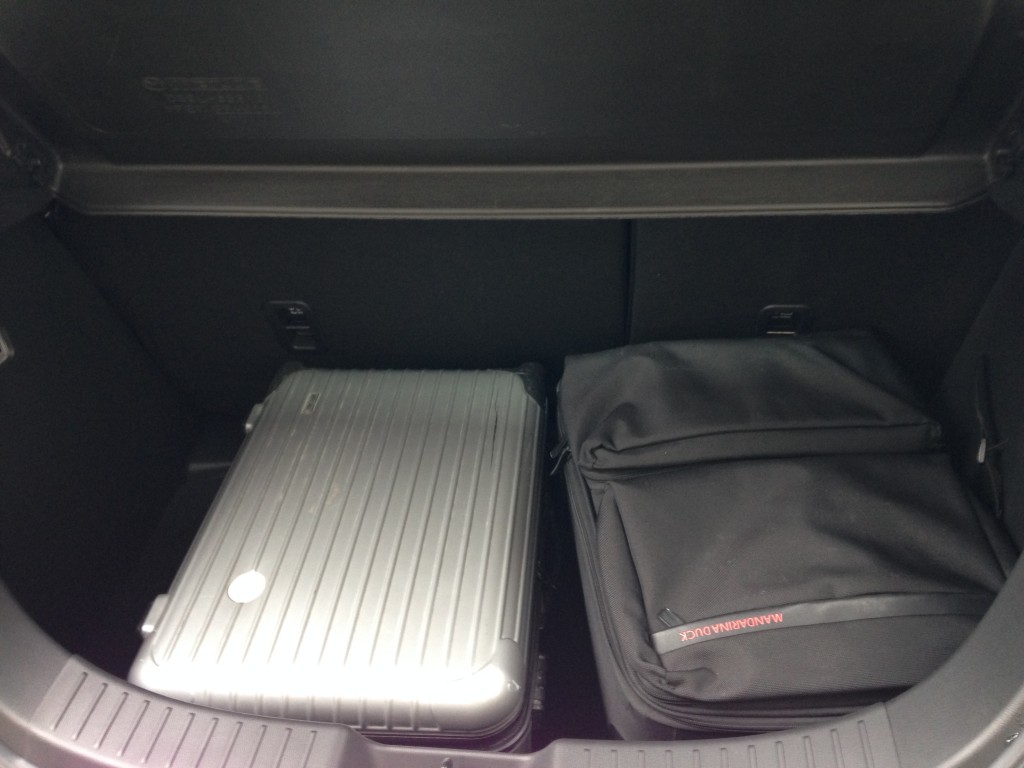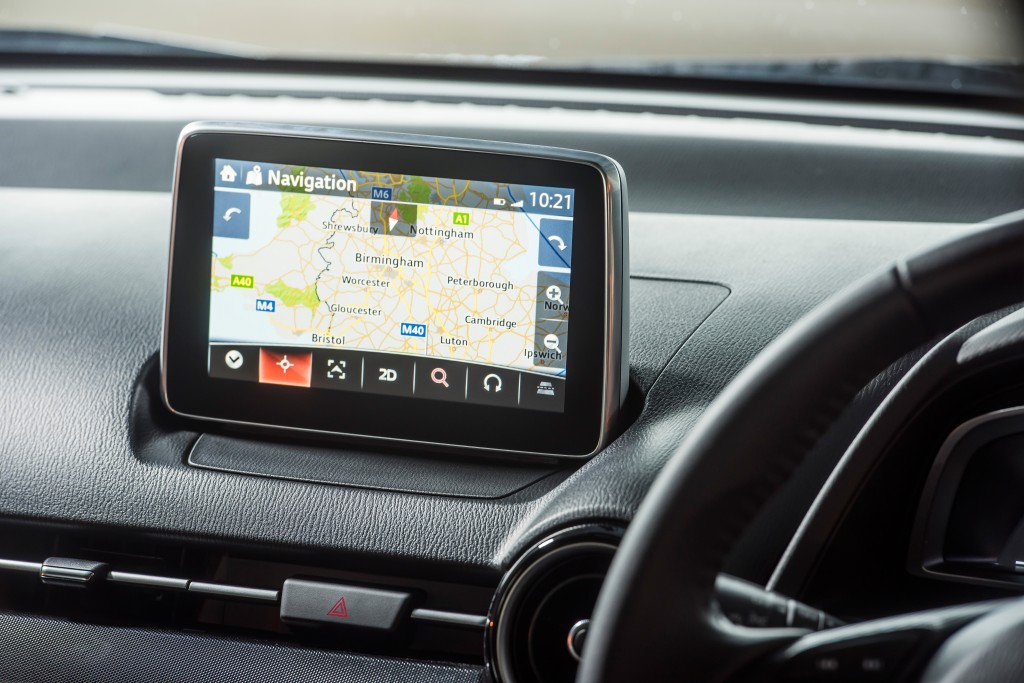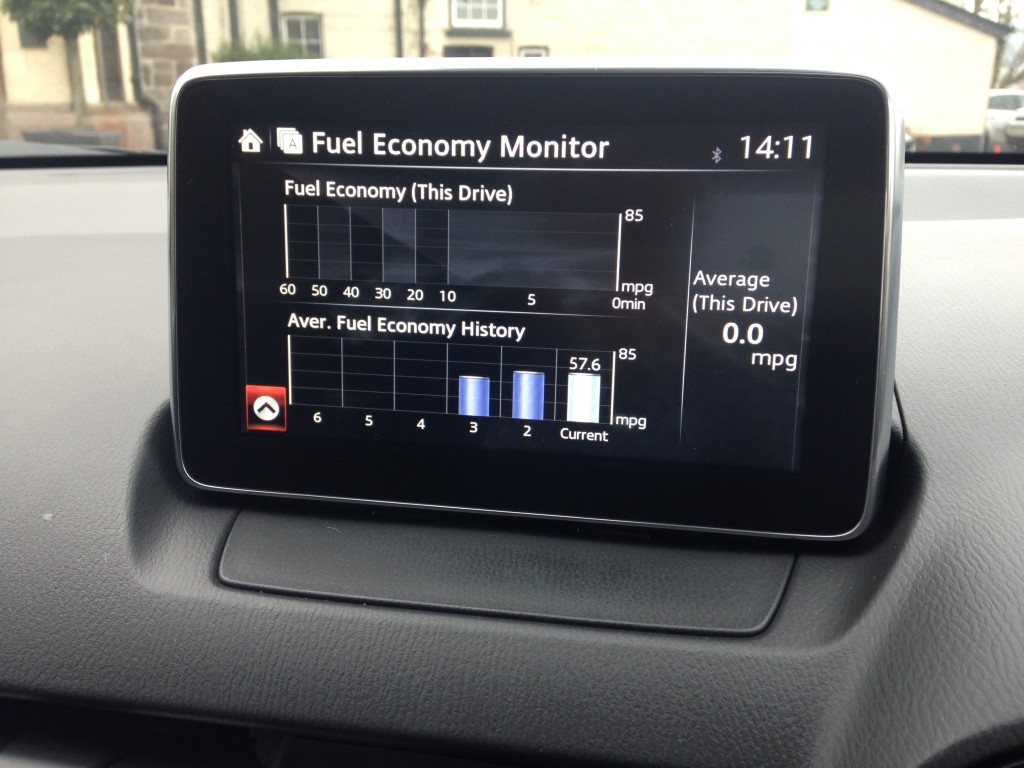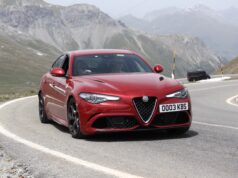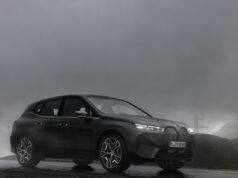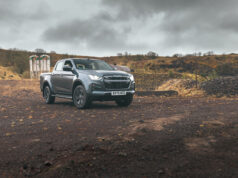
Mazda have been sweeping through their range with a fresh broom recently and 2015 looks to continue the trend. By the time they have conducted their planned launches for this year, the 2014 Scottish Car of the Year, the Mazda3, will be the oldest car in their range.
That car’s smaller sibling, the Mazda2, is the latest to be launched and TartanTarmac were invited along to try it out at the press launch.
Eyebrows were raised upon reading that the launch format included 200 miles driving through twisty roads in Devon. Mazda must be confident about how this car drives! Venerable gentlemen of the press on the event told stories of many companies restricting launch car drives to a simple run along a dual carriageway to mask dynamic shortcomings and agreed that this was indeed a bold move.
So let’s start right there. Make no mistake, Mazda’s confidence was well placed. The all new Mazda2 is an excellent drive. Over the course of the event, we sampled the 90 and 115PS petrol cars and the 105PS diesel, all 1.5 litre engines, but with quite different characteristics.
The chassis is consistently good. All three cars feel exceptionally well sprung and damped, soaking up uneven road surfaces in comfort while giving good feedback and most notably, giving the sense of solidity and confidence expected from a larger car.
The diesel, in particular, possibly due to a slightly different setup for the heavier engine, was a really relaxed, yet capable mile muncher. In my previous life as one of the army of frequently flying suited and booted businessmen, I was a regular player of the rental car lottery. Had I found myself walking down the rental row to find a Mazda2 in my space, I would be a happy man. As it happens, Mazda don’t do a lot of fleet sales so their cars remain a little more exclusive than that.
As well as the fine chassis, there are other notable aspects common to the three models we drove. The variable power steering took a little getting used to as it weighted up considerably at speed, but feedback was very good and the extra weight did add to the overall sense of relaxation and solidity.
Perhaps the highlight of the driving experience was the gear change. A lot of cars in that sector can feel like you are tugging a golf ball through a sponge with some knicker elastic when you change gear, but Mazda have obviously played to their strengths gained from successive MX5 boxes and both 5 and 6 speed boxes that we tried had a lovely short positive action that made quick progress through the gears a real pleasure. These cars felt like they wanted to be driven, which is a fine compliment as it only takes one drawback, such as a gutless engine or lifeless steering, to turn a car from “fun” into “transport”. No such drawbacks on the Mazda2.
High marks must also be given for brakes. They stopped the car easily and progressively, did not snatch, weren’t over-assisted and I was quite shocked when later checking specifications, to find that I was driving a car with drums at the rear. The car can be supplied with Smart City Brake Support which will halt the car if it senses you rolling into a stationary object. Meanwhile, Electronic Brake Distribution, Electronic Brake Asssit and Hill Hold Assist are all standard.
The three engines sampled were quite different. The first car we drove was the 105PS diesel. This is a brand new engine from Mazda and they have done well. Pulling very well from low revs, the engine spins very freely for a diesel and doesn’t get unbearably harsh towards the top like many small diesels. Mated to the six speed box, the car made easy work of motorway and twisty roads alike with the torquey delivery in the broad middle of the rev range as you would expect. There was perhaps a little lack of grunt at the very bottom of the rev range but it was momentary.
Next, we drove the 90PS petrol engine. This is the one Mazda expects to account for most sales and it is a fine free revving engine, but perhaps because we drove it in between the stronger diesel and 115PS petrol engines, we found it lacking in torque. It pulls well when spinning up towards the top of the rev range but on some hilly roads we found ourselves having to work it hard, often dropping to second, not for the sport of it but merely to maintain forward momentum.
As a marked contrast, the 115PS engine was a revelation. It has bags of torque, pulling strongly uphill in third and dispatching overtaking opportunities with ease. With an 8.7 second sprint to 60 mph and, coupled with the excellent ride and the sweet little gearbox, the car was a really pleasant surprise. The engine pulled so well that we speculated that real world fuel economy might be as good as the 90PS engine given that you had no need to change down just to maintain progress. It is a very accomplished engine, well suited to the car. Readers of this site will naturally be interested to hear if Mazda are considering a hot MPS version of the car. “No current plans” was the response. Perhaps I’m easing too comfortably into mid-life but I have to say that I’m not sure how much more than the 115PS variant you would want for the open road. The torque from the engine makes it much more accomplished and sporty than the headline power figure would suggest. It’s a very entertaining and capable drive. Oh, and I should say, the Lane Departure Warning System definitely works, and does so frequently on a twisty cross-country drive, but fortunately there is an off button.
On the outside, the car continues Mazda’s recent strong family look with an aggressive front grill and a swooping swage line rising from front to rear, closing in on a trailing roofline with a raked rear hatch. Overall it is a good, classy look and the car is refreshingly less geometric and straight than the standard of the group, the Fiesta.
It’s one of the better looking cars in the sector but in the Mazda2, the family design is perhaps less successful than in some of the larger Mazdas, with the proportion of metal to glass at the rear door going too far for my eye.
This was something that was born out from the driving seat experience. As with many cars with similar designs, the visibility over one’s shoulder at a 45 degree junction is poor, with a very big C-pillar area and very little glass at the corner. It’s a facet of the current design trend and is true of many other cars, but it is the price you pay for the look.
The interiors of the cars are another strong point but we should state that all the cars we drove were of the higher “Sport Nav” specification. Nevertheless the common materials were very good with dark and (mostly) tactile plastics contrasted to metallic highlights and switchgear. Overall there is a very high quality feel and its a million miles away from the “acres of hard grey plastic” feel of many small cars a few years ago.
The seats were good, although unexceptional, and were part of a very good driving position with well-spaced pedals and room for a clutch rest to the left. Ahead of you there is one major gauge with a smaller digital panel to each side. On the diesel and the 90PS petrol we had the speedo straight ahead with a tacho readout to the left.
On the 115PS petrol model, the tacho took the centre position with an inset digital speed reading and a head-up display repeating it straight ahead. For me, the Active Driving Display head-up display feature, achieved via a transparent screen popping up from the top of the binnacle, was a bit “add-on” and felt less integrated than those more commonly found on high-end executive barges.
The entertainment and information content in the SportNav spec is provided via a large touch-screen front and centre, controlled by a jog-wheel aft of the gear lever. Multiple USB sockets, smart-phone integration, 3D satnav, cloud-based streaming and DAB radio all add up to a very nice spec and the big clear display makes for a sense of one well designed solution. It’s a notable contrast to other cars with multiple small displays and dozens of different buttons.
As for value, prices range from £11,995 to £15,995 for manual petrol engined cars, with diesels from £15,995 to £17,395 and auto boxes adding a further £400. Pick of the range has got to be the £15,995 115PS Sport Nav which is a wee corker.
There is little point in comparing list prices to its rivals. I suspect other cars in the sector will be more commonly discounted and the Mazda is less likely to be.
Mazda had to increase planned production of the outgoing model at the very end of its life to meet demand and they are riding high in the JD Power satisfaction charts, so the Mazda2 isn’t going to be a bargain, but residuals should be strong and the car delivers an upmarket and exclusive feel that will appeal to many buyers.
Mazda say that 80 percent of buyers are doing so through their in-house finance services, mostly in PCP form and that they are doing a good job of retaining customers as they come in to discuss the options at the end of the contract.
The Mazda 2 then. Nothing dull about it. A stand-out car in a crowded sector. See it in the flesh, try it for size, but whatever you do, definitely drive it.


